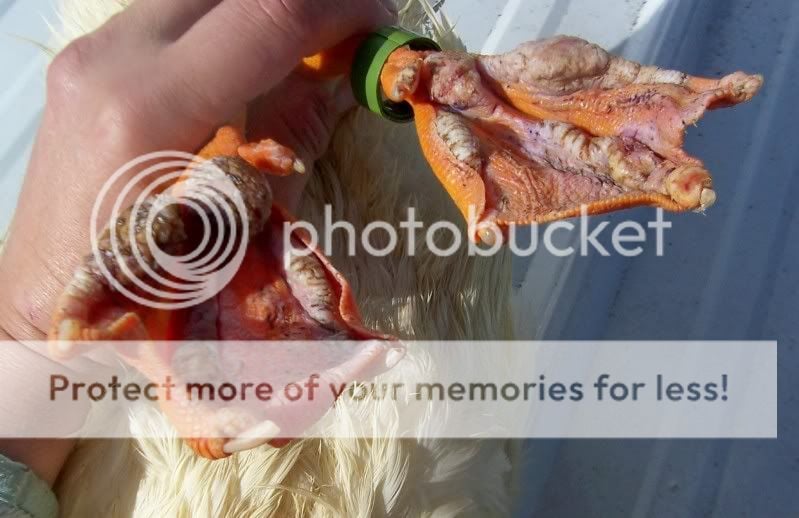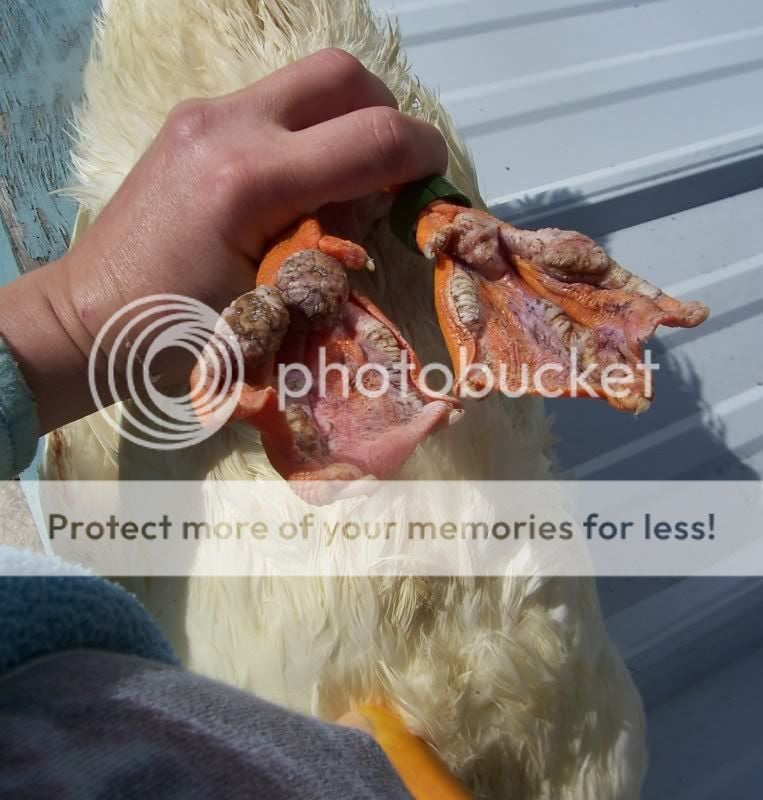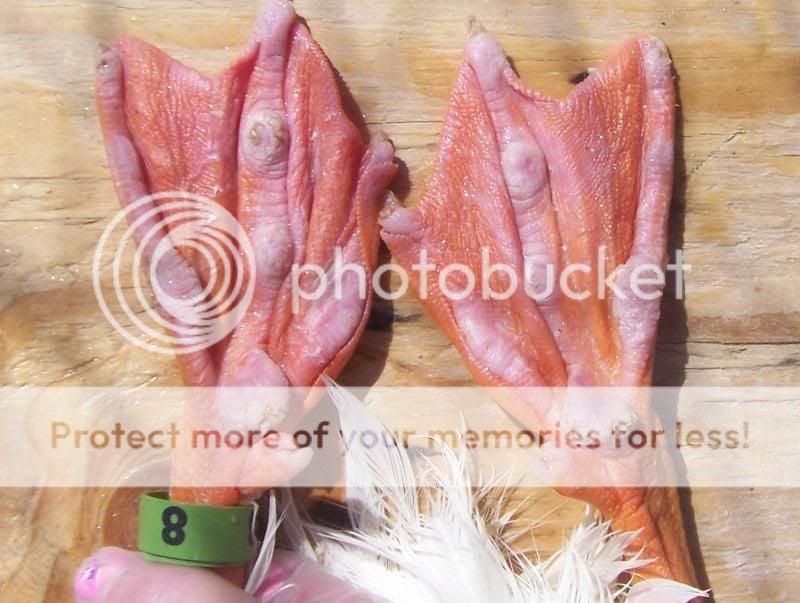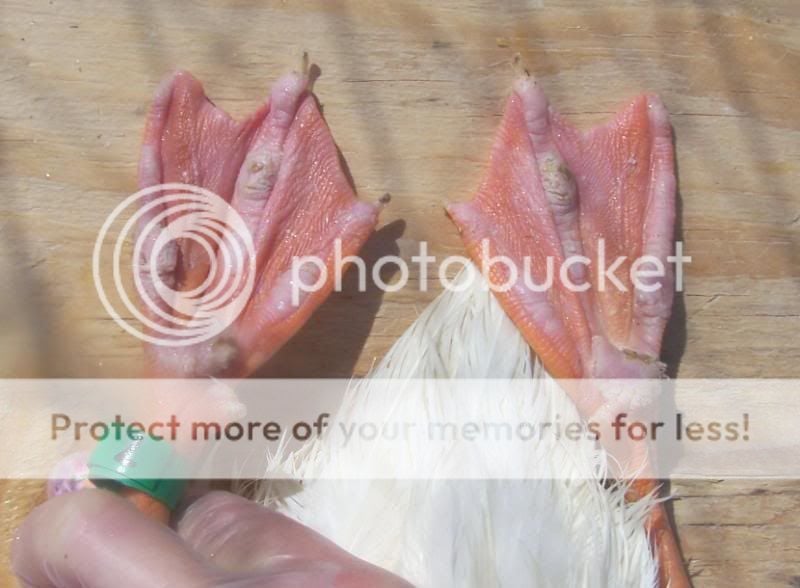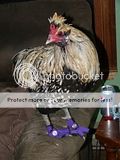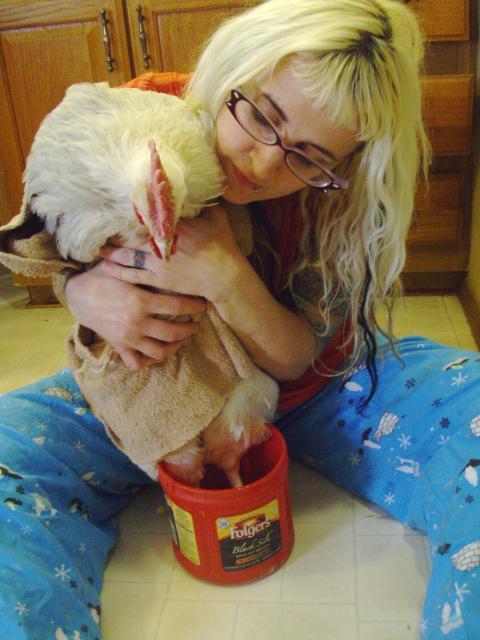A close friend of mine has been having horrible problems with her flock getting bumblefoot. I sent her many links and pictures from this forum to help her and had extensive conversations with her numerous times about preventing it and how to actually do the "surgery" for it. Unfortunately she has a VERY weak stomach and just couldn't go through with the procedure herself. I advised her that if she didn't do the "surgery" that the birds would surely continue to suffer and eventually die. I also talked to her quite a bit about her ground coverings and things that could be causing this to happen in her flock so often. Since this person volunteers at a raptor rescue I told her it might be wise (since she can't do this herself) to talk with the avian vet on call and see if she might do the procedure for her. She did take my advise and the vet did the procedure on the one bird that was extremely serious at that point. Then to my surprise she didn't want to do it on the other bird.
Instead she suggested soaking the foot for 5 minutes a day in Tricide-Neo powder for FISH. She warned my friend to be careful as to not get the solution on herself. I have no idea as to why. Anyway to make a long story short after about a week of soaks the bird no longer has bumblefoot and never had to be cut open. The vet mentioned that they had been using this for sometime and were having great results with it.
I just wanted to pass along this information for those that might be like my friend, needing a solution other than cutting into the foot itself.

Instead she suggested soaking the foot for 5 minutes a day in Tricide-Neo powder for FISH. She warned my friend to be careful as to not get the solution on herself. I have no idea as to why. Anyway to make a long story short after about a week of soaks the bird no longer has bumblefoot and never had to be cut open. The vet mentioned that they had been using this for sometime and were having great results with it.
I just wanted to pass along this information for those that might be like my friend, needing a solution other than cutting into the foot itself.






